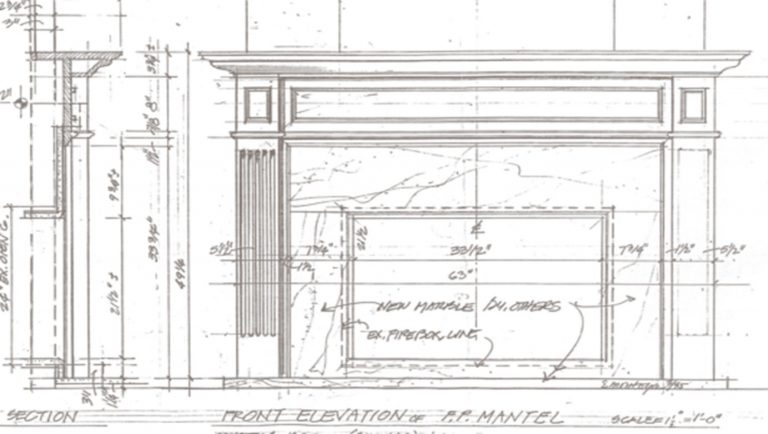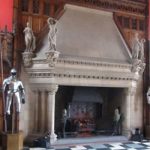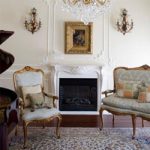The frame that surrounds the fireplace: An origin story of the Mantel

Italian design became even more prominent in the seventeenth century. Trained architects appeared, and in following the descriptions by Vitruvius and Palladio, united the form, composition and proportion of the fireplace with the whole of the interior. The splendour of Baroque, ornate Rococo, the sobriety and balance of the Palladian style and the brilliance of Adam all made an indelible impact upon the 18th century fireplace. Coloured marble began to be used, as were ornamental mirrors. The hob grate for burning coal became common in the late 18th century, and was set into the fireplace opening, with the center coal burning grate being flanked by metal side plates that provided an area to heat food and boil a kettle.


Both the 19th century industrial revolution and the exploding population had an extraordinary effect upon the fireplace
Both the 19th century industrial revolution and the exploding population had an extraordinary effect upon the fireplace, as there was a surge in building and an entirely new industrial middle class to outfit. Design ideas that were heretofore available only to the very rich were now accessible due to methods of mass production. Towards the end of the 19th century, marble became too expensive for the majority of homes, and people made do with slate, cast iron and painted pine. These surrounds were marbleized to imitate the true marble fireplaces of the rich. The average middle-class home might have two fireplaces, one in the drawing room and one in the dining room. Overmantel mirrors became quite common, as plate glass was readily available.

In France, the curvaceous Louis XV and more austere XVI designs were quite popular, as they were smaller and suitable for bedrooms. Fireplaces in general became more diminutive, with shallower hearths and tiny fire baskets to support coals. Neo-Gothic, Elizabethan and naturalistic motifs became decorative elements only, as their original proportions were sacrificed. People were able to travel widely and came back from the Far East and North Africa with a mélange of design ideas to add to the pot. Cast iron mantels with complex designs became increasingly admired. At first, tiles were used only in the finest homes; after methods of mass production became commonplace, they were found flanking firebox openings across the classes, and helped to visually break up the heavy ornamentation that was so popular.

The 21st century suggests we’ve almost come full circle with regards to our relationship with the domestic fireplace. After being close to forgotten, it has emerged again as a coveted element in both modern and vintage interiors. Classic Mouldings looks upon its mantel designs as celebrations of the hearth. Pull up a chair and dream with us. We think there’s something to suit most everyone; and if you don’t see it, we can concoct whatever it is you’d like to see.

